The Perell Production Function
The American dream is not a white picket fence and a golden retriever. The new American dream is the ability to make a profitable business online. The internet has enabled an explosion of one-person companies led by ambitious creatives. These entrepreneurs understand that their ability to reach a global audience is a superpower. Even the smallest niche becomes profitable when multiplied by the number of people online. One of the best examples of this new class of entrepreneurs is David Perell.
David Perell is a writer, entrepreneur, and podcast host. His niche is teaching people how to write online. I first read David's work when I stumbled on his essay titled What The Hell is Going On?
If you haven't read it yet, the essay is well worth your time. It's also just the tip of the iceberg. Since I started following David, he's put himself on a meteoric trajectory, quickly amassing over 80,000 Twitter followers, landing interviews with guests like Neil De Grasse Tyson, and working with Chamath Palihapitiya.
I'll claim partial responsibility for that last one, but most of the credit goes to Twitter.
The amount of content that David produces is impressive. Prolific doesn't quite capture the amount of effort that goes into a multi-pronged publishing strategy spanning Twitter, podcasts, essays, an online course, and various other mediums. This variety is not as simple as it seems. Users of different platforms expect content that fits specific themes:
- Instagram rewards witty captions and picturesque backdrops.
- Twitter is the land of pithy comments and proverbs.
- TikTok makes stars out of lip-sync experts and impressionists.
The proof of work for acquiring social capital differs based on the platform you're using. Content that works in one medium may not easily transfer to another audience. David understands this and has shaped his strategy to take advantage of the arbitrage between platforms.
There is a lesson to be learned here. It's something that I call the Perell Production Function.
Here's how it works:
The growth of most fields follows an S-shaped curve. This S-curve is essential because it is the fundamental driver behind continued economic growth. It also provides a convenient way to look at the lifecycle of an independent entrepreneur.
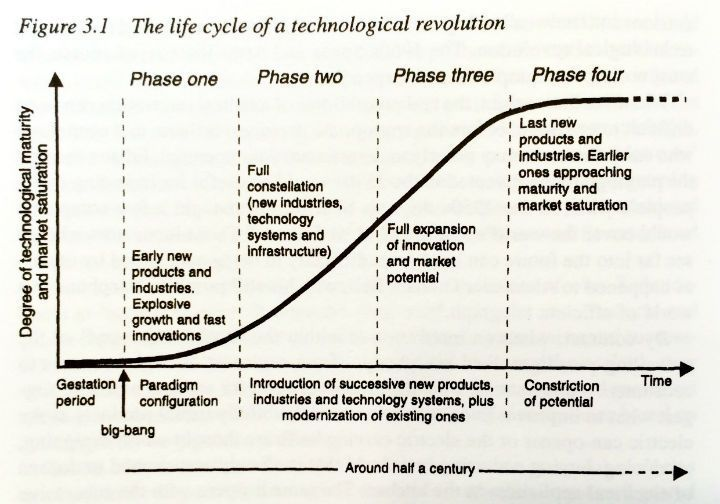
Source: Technological Revolutions and Financial Capital, by Carlota Perez
The growth of David's content empire looks familiar to our model above. In a recent update, he shared that the last 30 days had brought in ~10,000 subscribers, following nearly three months of steady growth at 2,000 subscribers per week. His growth strategy is working.
Let's take a look at this growth in the context of his business model:
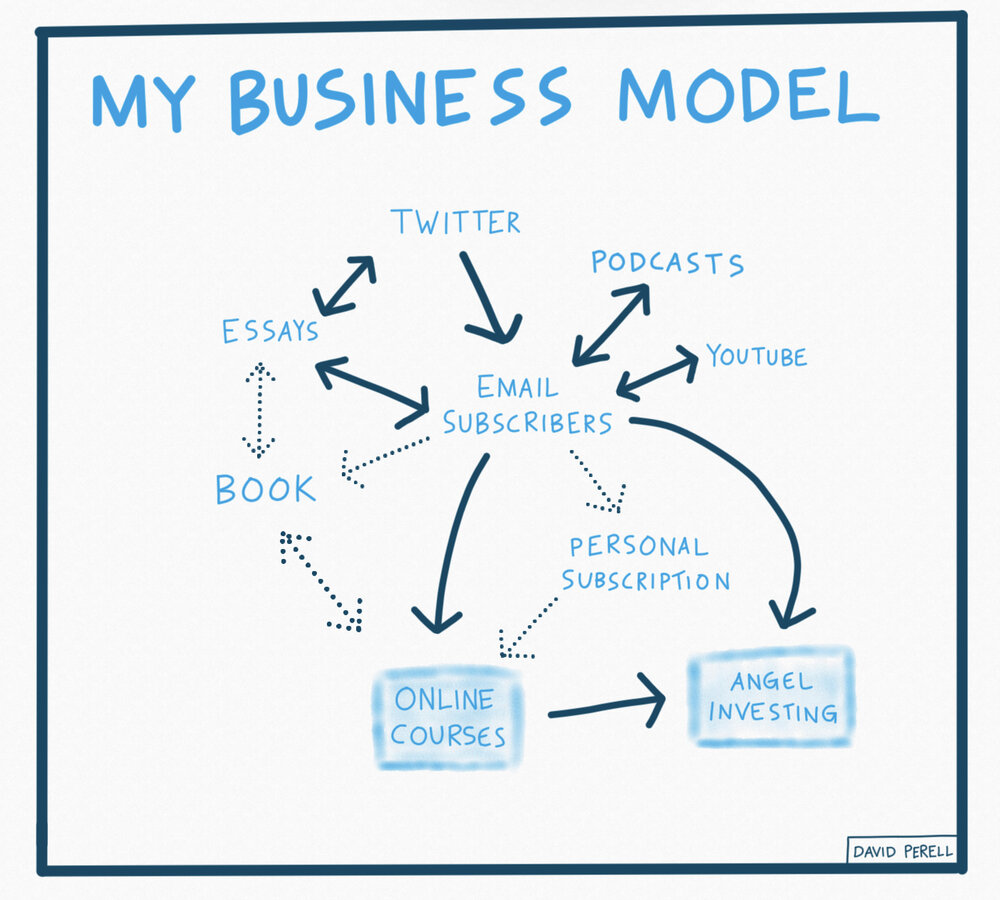
Source: Perell.com
Subscribers are the lifeblood of an online publishing empire. Email represents one of the last open standards available to creators. David intentionally anchors his audience to an email subscription, which increases long-term retention and reduces platform risk. This approach differs from most influencers who tend to work exclusively through platforms like Instagram or Twitter.
Building on top of existing social platforms increases the speed at which you can grow your audience, but there's always the chance you'll get caught in their censorship algorithm. Understanding this, David finds his followers on platforms that reward his unique brand of content. Then, he transfers these relationships to owned platforms like email mailing lists. This transfer provides the best of both worlds: discovery on platforms and long-term distribution through email.
Email subscriber growth is a natural place to start when measuring the Perell Production Function. Over the last four months, his newsletter has seen a daily growth rate between 3-4%. This growth may not seem like much, but consider that average growth for the S&P 500 is ~7% per year. Applying the rule of 70, a daily growth rate of 3% means that subscribers will double every 23 days. This growth is fueled primarily by his Twitter account, two high-density newsletters with curated links, and frequent long-form writings published to his personal website. Don't underestimate compound growth!
Another way to measure the Perell Production Function is the total volume of content produced across all platforms. Content is a tricky metric because the proof of work for acquiring social capital differs based on the platform you're using. For our model, we'll assume that a Tweet is the atomic unit of content -- like a proton in an atom, it's the smallest content form available to creators today. Here is an easy way to think about the value of each content, measured by reading time:

With a multi-media strategy, it's crucial to understand how each form of content affects the Production Function. We can break this down to see how much each type of content moves the needle:
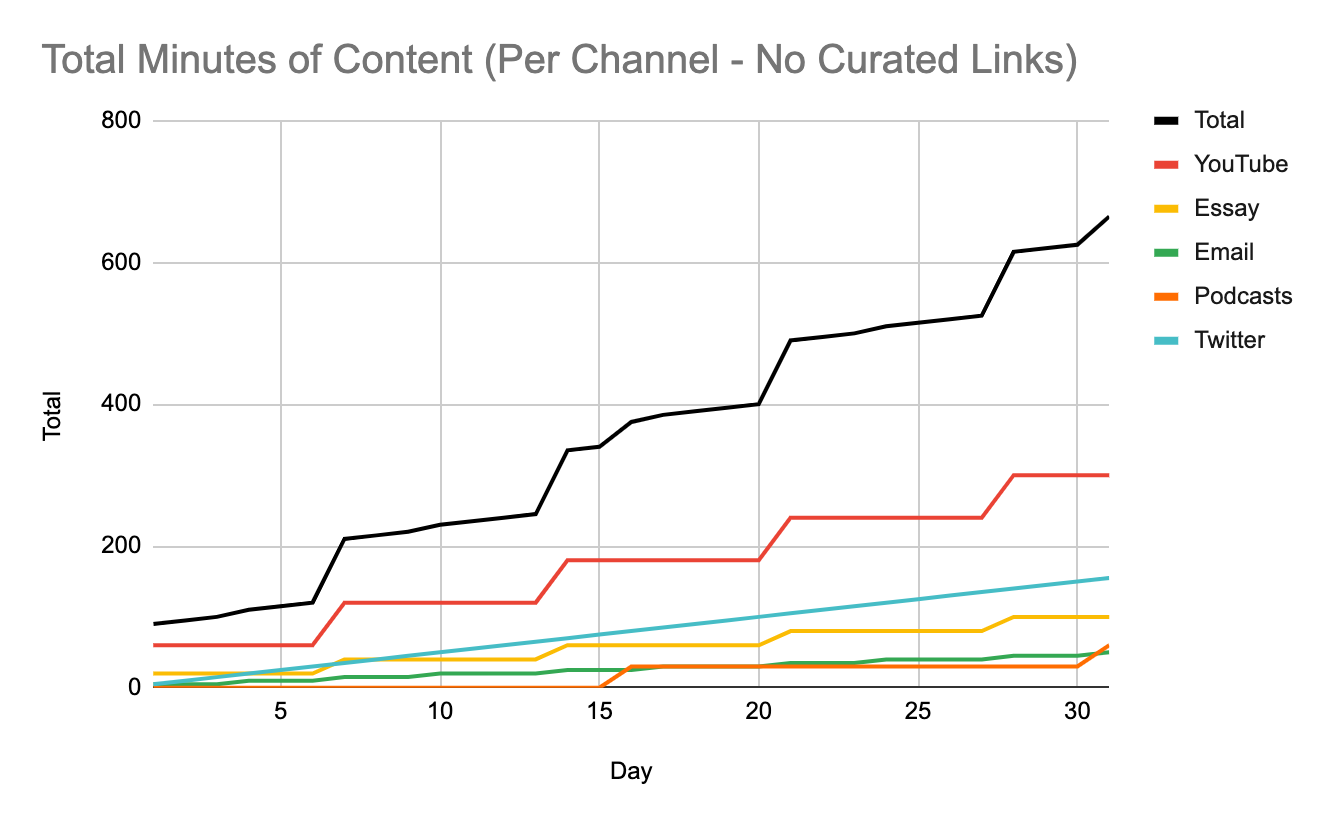
This model creates a diversified stream of content but it quickly reaches a saturation point. Eventually, new content fails to make a meaningful impact on the area under the curve. At first, posting a video or writing a new essay meant that the total volume of content would double every few days or weeks. However, as the total amount of content grows, it becomes harder to separate what's new from the old. This is important because David has written that people prefer to consume recently created content.
At first glance, this seems like a flaw in the Production Function. The longer you keep at it, the more difficult it becomes to differentiate new content from old. The trick to getting around this is finding a way to increase output with the same amount of work. Remember, our basic model tells us that growth can be maintained through sustained innovation.
In this scenario, sustained innovation means producing exponentially more content over time. This is difficult for a single creator (no matter how prolific they might be).
The easiest way to introduce more content into the model is through the introduction of a curated links newsletter. This increases the total content of the newsletter by providing readers with links to external reading. The content is still coming from you, but it's being created by someone else. Compare the charts before and after adding a curated links newsletter:
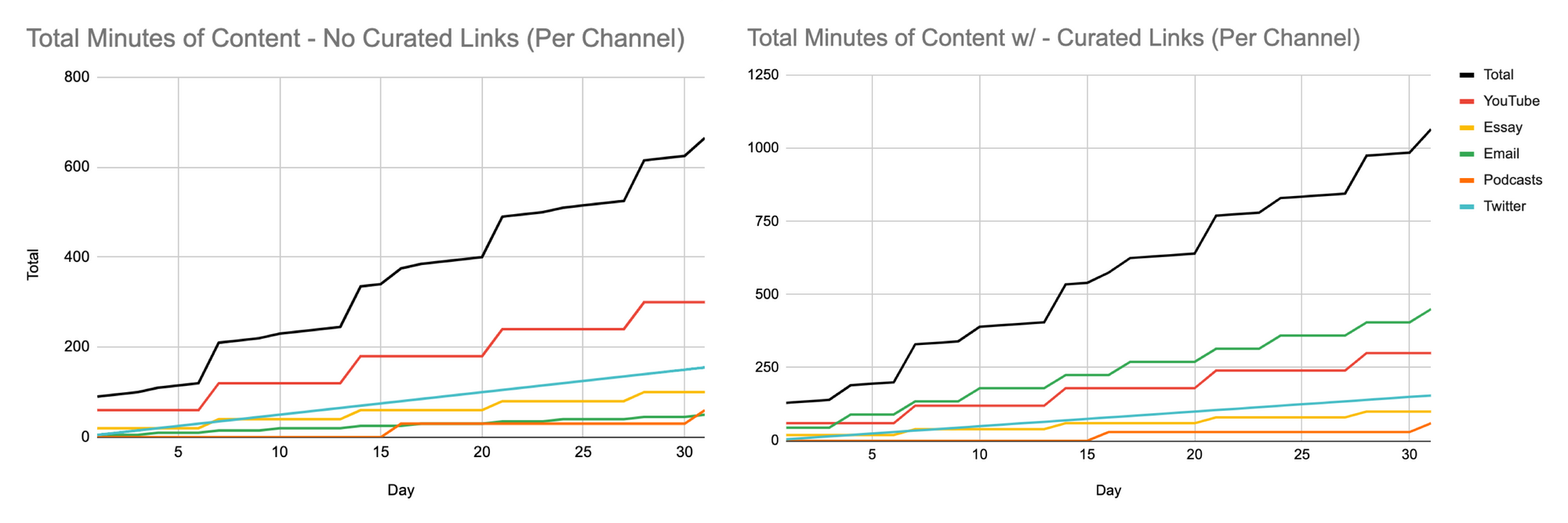
The line is steeper, but the function is still linear. In order to keep up with the growing backlog of content, it needs to go exponential.
David has solved this challenge through his writing product Write of Passage (WoP). WoP is a structured class that enrolls aspiring writers looking to accelerate their online presence. WoP, combined with a Fellowship program, effectively extends the reach of the Perell empire by expanding the production of new content through these students. It's not a zero-sum game -- both sides are getting something valuable out of this arrangement.
New writers get the structure of a professional program and exposure that is vitally important for early-career authors. David gets an army of enthusiastic, creative individuals who spread the good word through their online publications. With this model, David's writing network undergoes a step change.
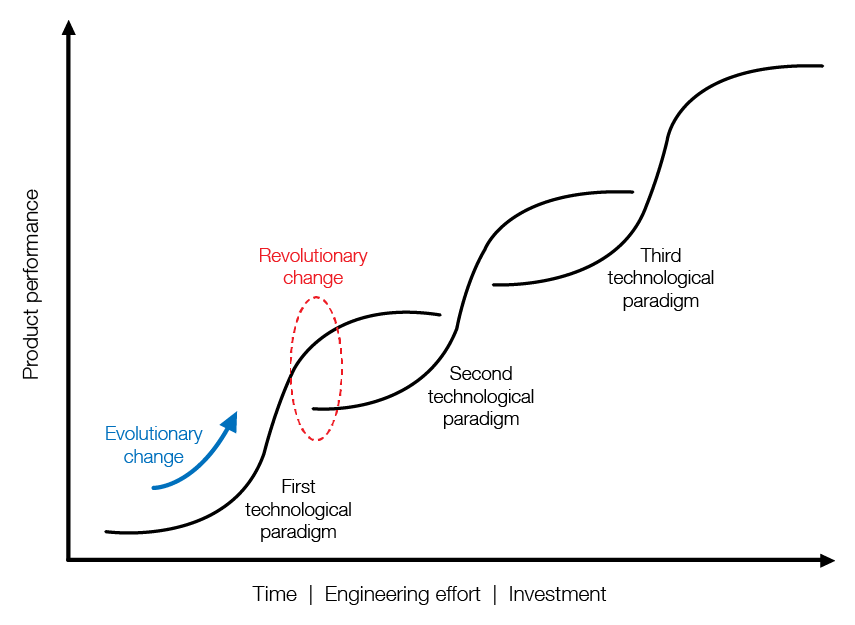
Source: Juan Cols
Each student from WoP joins David's production function. This creates a virtuous cycle: more content == more awareness == more signups.

The internet rewards those who are prolific. In the New American Dream, the ability to build an audience is one of the most valuable skills you can have. By aligning his own incentives with those of his audience, David creates a sense of shared purpose beyond a simple financial transaction. Each writer becomes a part of his empire — an empire defined not by geographic borders, but a shared set of beliefs. The goal of David’s model is not simply to write more, but to increase the gross domestic content of the internet.
That's a dream I can get behind.
If you enjoyed this essay, please consider sharing it with a friend. The best way to help support this publication is to spread the word.
Sunday Scaries is a newsletter that answers simple questions with surprising answers. It's part soapbox, part informative. It's free, you're reading it right now, and you can subscribe by clicking the link below 👇